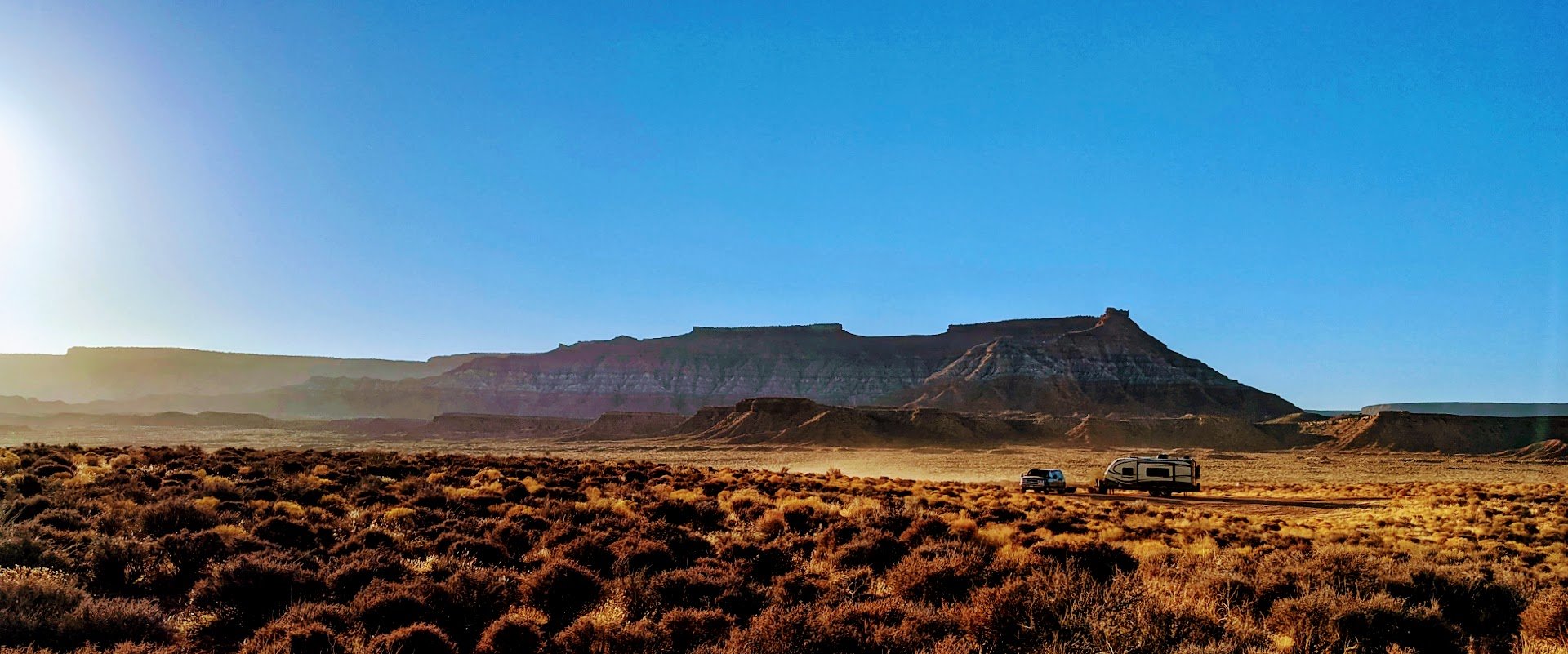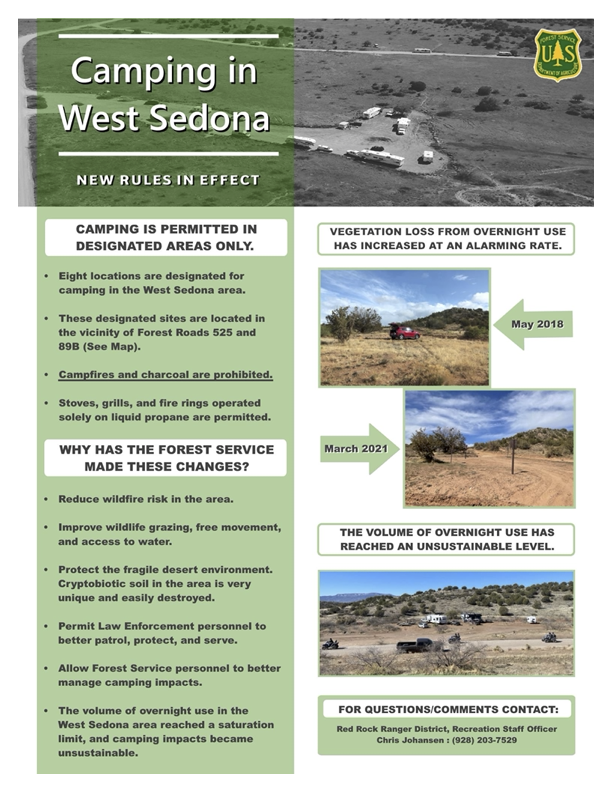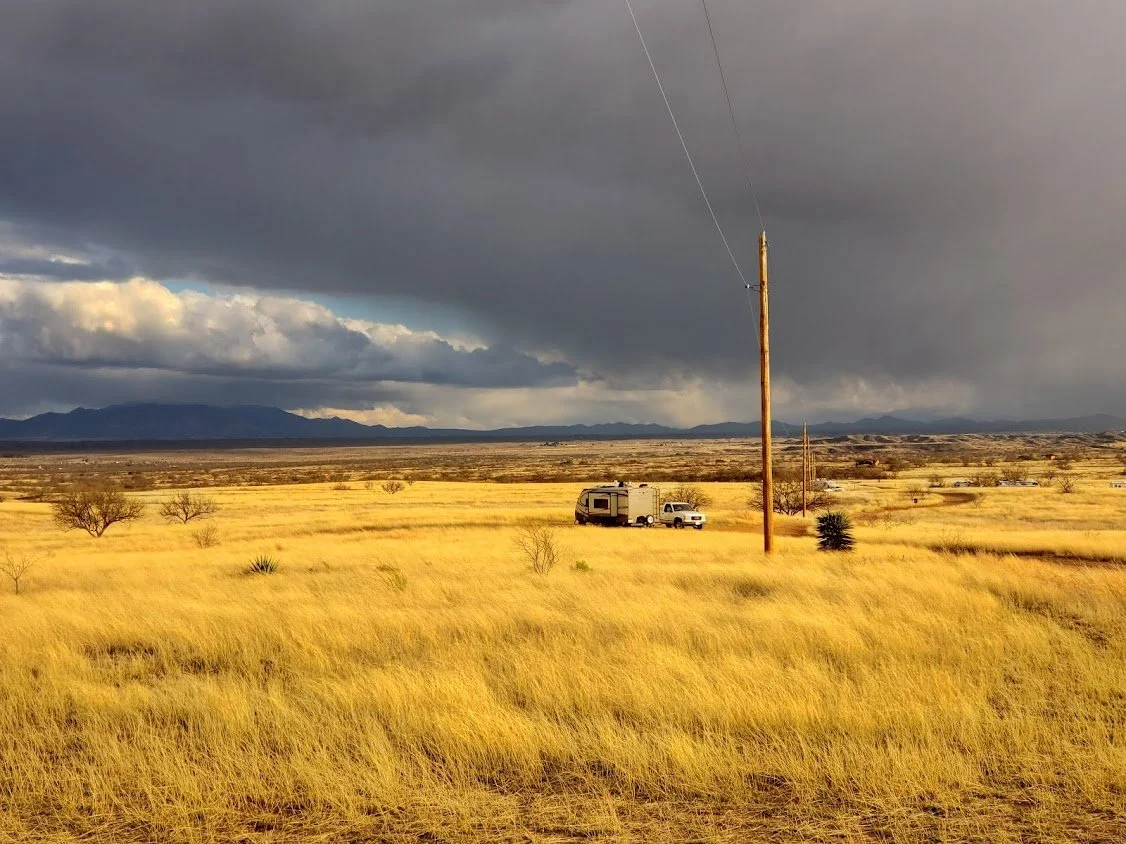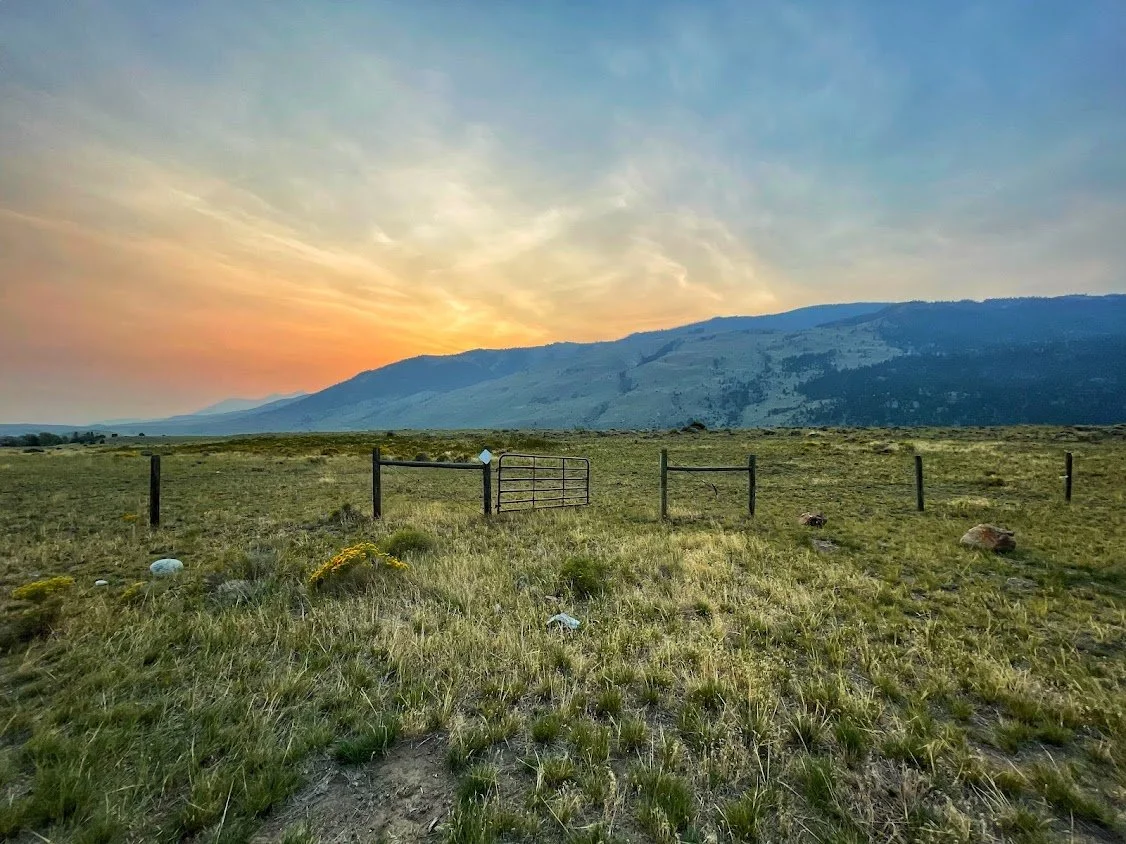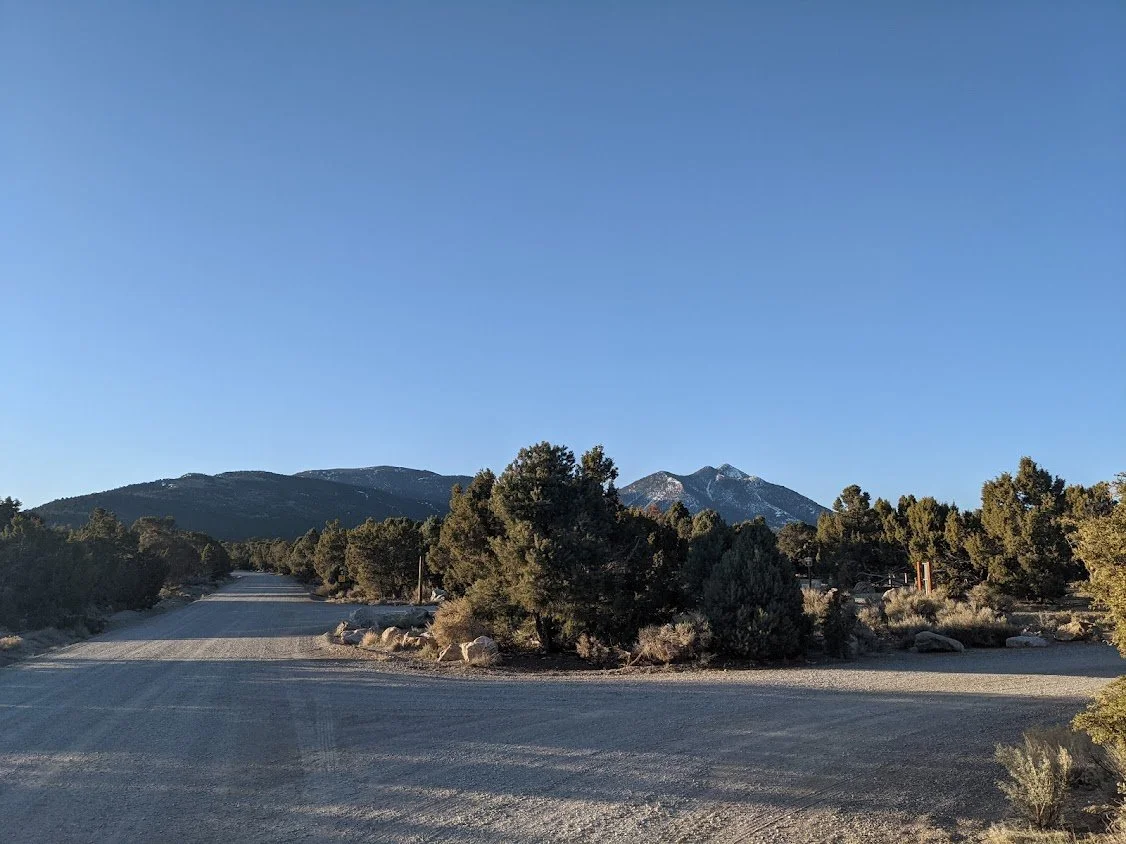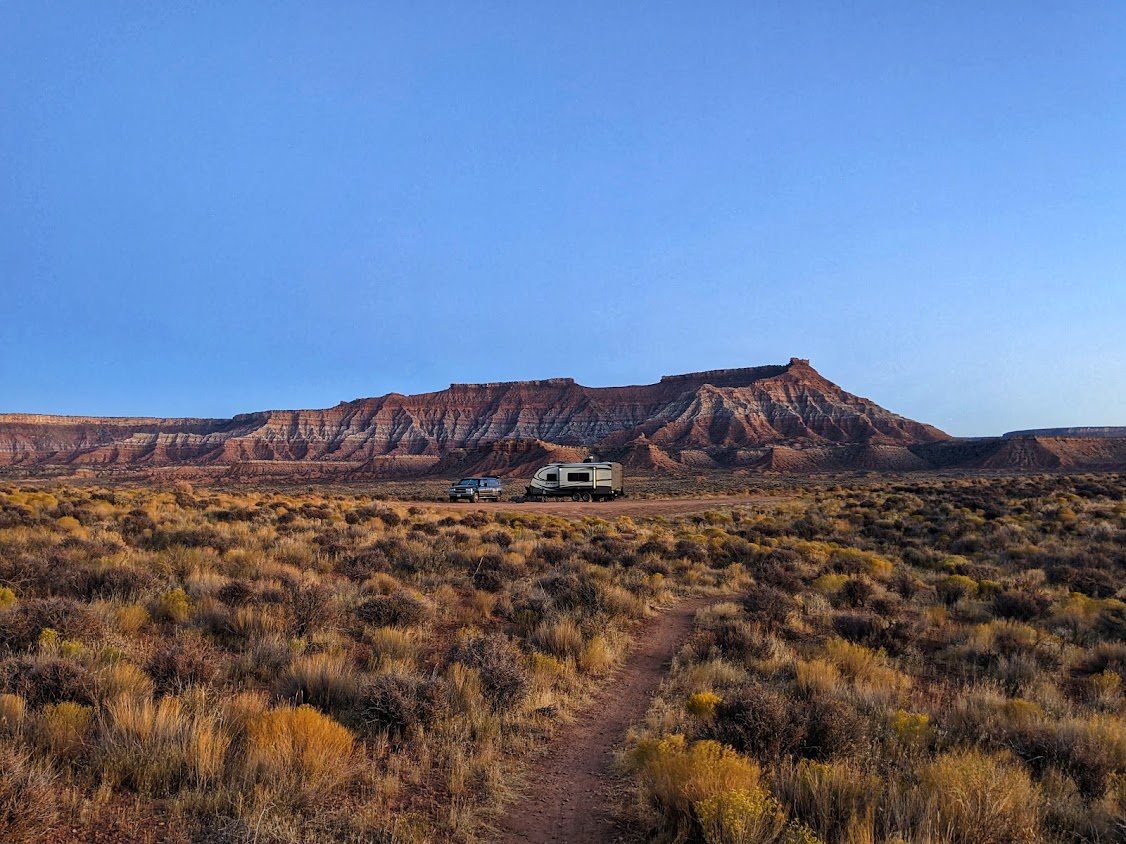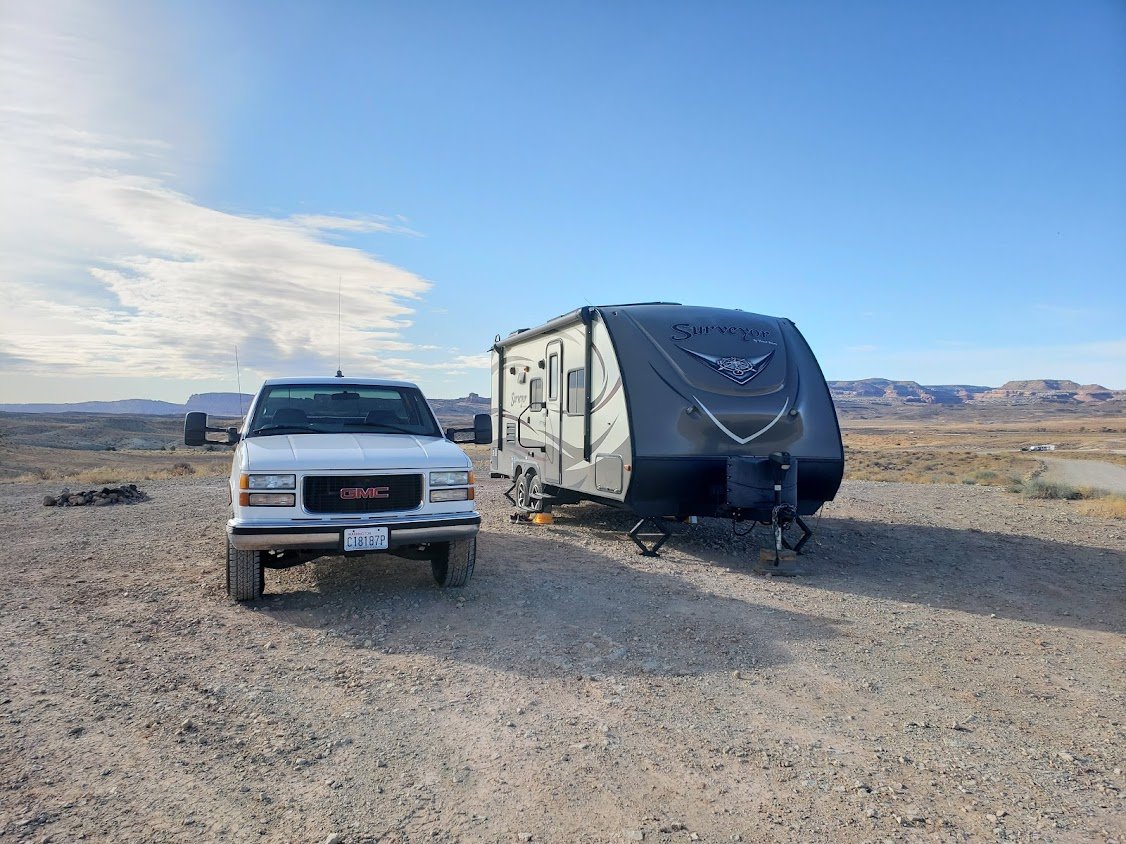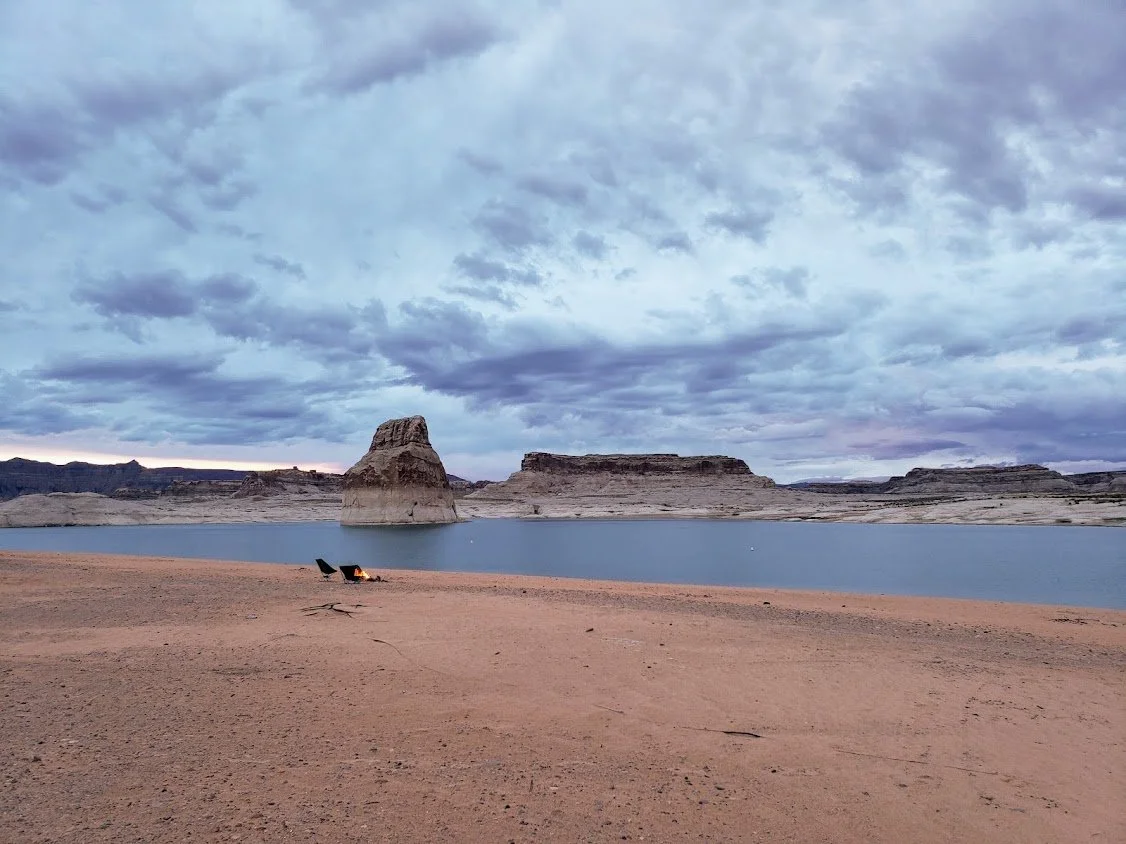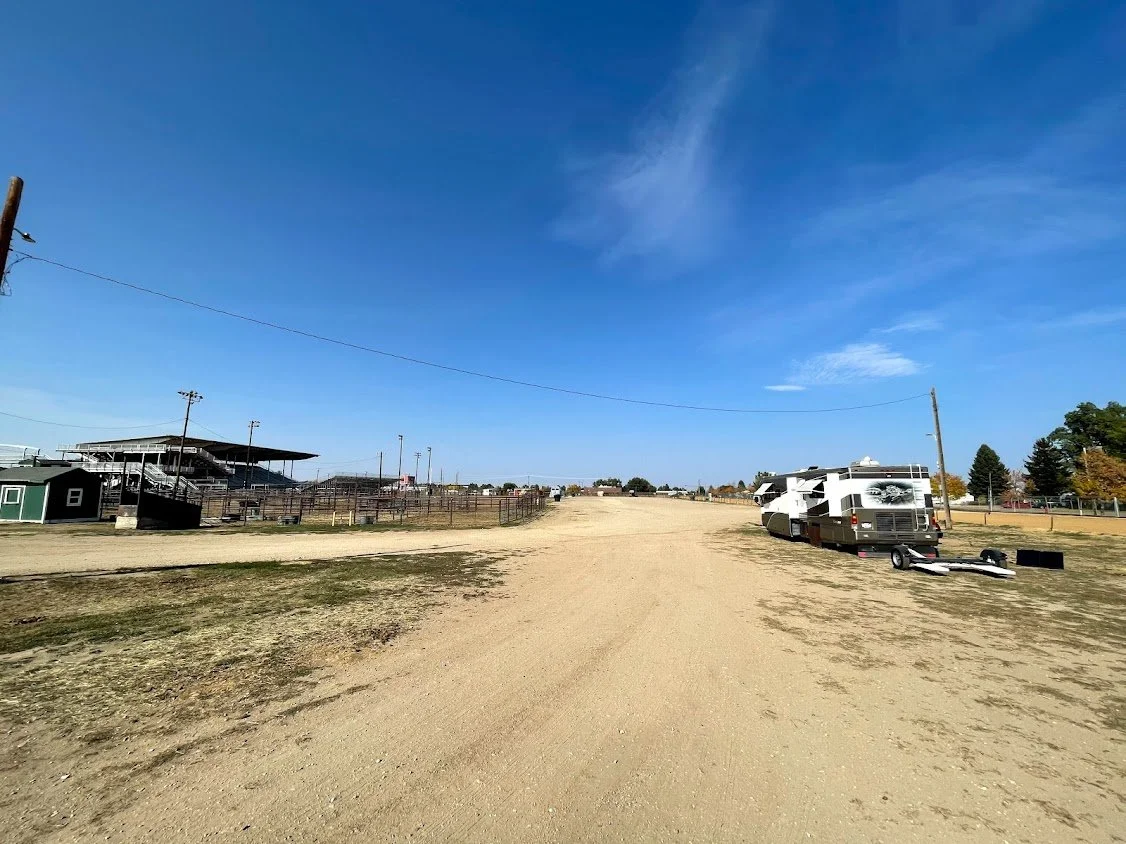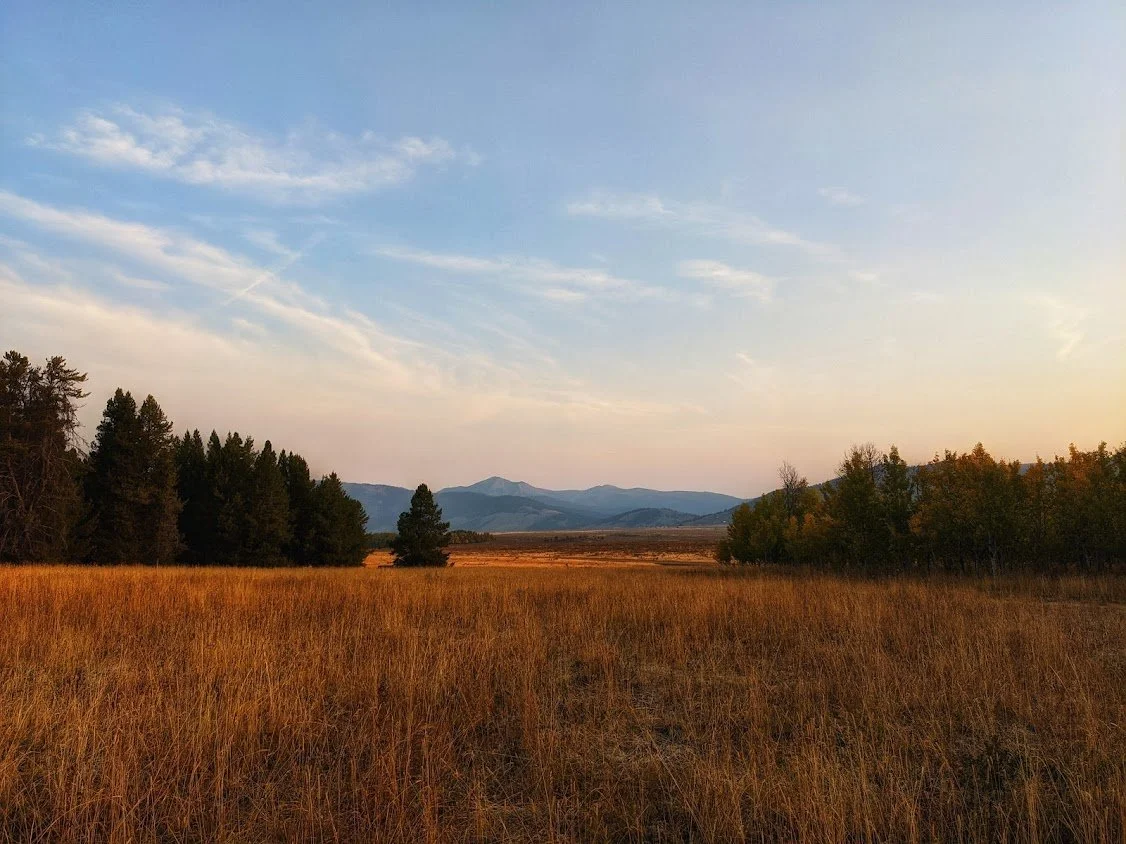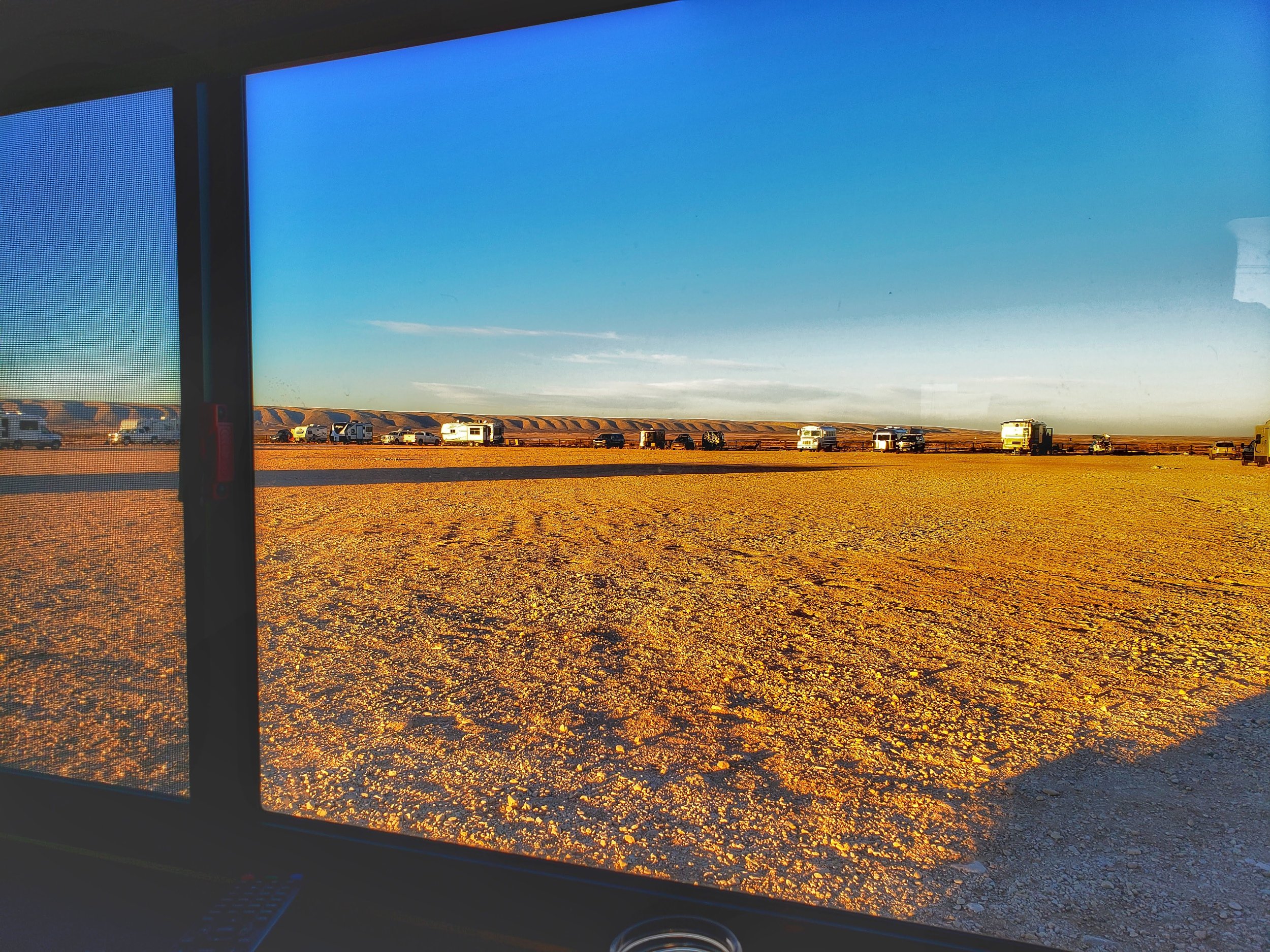
We take Zoom calls from here.
How we Boondock
There is no perfect approach to working, living, camping off grid but we are happy to share our best practices. Remember to respect public lands, pack out whatever you pack in and obey all local ordinances for stay limits.
Wait, what is boondocking?
Boondocking is camping, for us its in our RV, on dispersed public lands with no services. This is typically free to do for up to 14 nights. We carry our own fresh water, make our own power, and we store our waste water in our tanks until we leave to find a designated dump station.
More on boondocking from the folks at Campendium.
Finding Camp Spots
We use Campendium for almost everything on the road, boondocking, dumps, fresh water and RV Parks.
Well we use to. Campendium sold to Roadtrippers and degraded their service in late 2024. We’re currently testing The Dyrt, iOverlander and others.
Hurricane Cliffs BLM, one of our favorites, just outside Zion NP.
Read the reviews ahead of time. Respect the resource that is your public lands.
Not all boondocking is a perfect slice of wilderness set aside from the world, some of it is right on the outskirts of cities both large and small. It is also important to note that public lands are also a vital resource for those out here not necessarily RVing by choice, but doing so as their last option for a roof over their head due to the crushing costs of housing in America. You combine that need with the real possibility that not everyone respects this public resource and the conflict of “free camping” vs “responsibility free camping” is one threatening nearly all accessible public lands that we use and love.
Sedona’s vaunted Forest Road 525c is a perfect example (see below) of a place now reduced in scope/availability due to years of overuse and abuse. Always have a backup option or backup RV park in mind when planning your next boondocking spot. Pack out what you pack in.
Forest Road 525c, May 2022, before major rule changes.
In our last visit to Sedona (tent camping via our tow behind) we drove through FR 525c to find it bursting at the seams with RVs. We camped elsewhere to avoid the crowding.
Revised Rules for Sedona/Red Rocks
As of Sept. 1, 2022, the new West Sedona Designated Dispersed Camping and Day-Use Area in Coconino National Forest was implemented. Camping is now only allowed at one of these eight designated dispersed camping areas in west Sedona.
USFS radically reduced the availability of camping in Sedona’s dispersed camping areas due to over use, trash and human waste. The same has occurred outside Moab, Utah, where UtahRaptor State Park has been founded (in place of once free camping) to curtail overuse, trash and the destruction of natural resources from overcrowding.
Checking for data coverage
Even with Starlink in tow, we need LTE coverage to ensure we have a backup for its common outages. We use Campendium’s cell reviews, Open Signal and CellMapper to judge coverage the best we can.
Water conservation and tank sizes
We are lucky enough to have a Class A with 100 gallons of fresh, 50 black and 50 gray for about 12-14 days of dry camping. Fresh water is always the limitation. We find dish washing to be the largest water user, so we use compostable plateware when we need to stretch our tanks. We also catch our dish washing water in a bin for safe disposal in areas where this is allowed, using only natural biodegradable soaps for everything we do in the rig.
Security
There is no better security system than your intuition.
If you do not feel safe to leave your rig alone to get groceries, hike, etc do not stay at that location. Even at an RV Park, trust your gut and allow your family to provide their feedback. If either of us feel unsafe, we leave our current place no matter the inconvenience. We also monitor our rig remotely with battery operated cameras that push alerts to our phones. Link here.
RVs are easy to break into, travel trailers can be easy to steal. Take precautions and understand where to store your valuables appropriately.
In our 4 years we’ve had our close calls with theft at Walmart Parking Lots, not boondocking locations.
I would strongly oppose any ideas that it is unsafe to boondock, that assumption is that violent crime (portrayals of violence in movies) is almost always from a lone person hunting the innocent in the back woods. In reality crime is based on population density, statistically its more dangerous to Walmart Dock than it is to spend an evening near the rim of the Grand Canyon.
Not all boondocking is free
There are several types of open public lands, not all are free, but almost all are affordable. Some will require special permits that are easy to obtain, others may just have an honor box like a USFS campground.
More on free camping
Some of our favorite boondocking spots
You will find that some our favorites listed below do have a cost and the availability of partial hookups, but all should allow for a dry camping option. Click the images to view the Campendium info for that spot. We have worked full work weeks at every location listed below, on LTE plans from Verizon, AT&T, and T-Mobile.
Las Cienegas NCA, Sonoita, AZ
Carbella Recreation Site, Gardiner, MT
Ward Mountain, Ely, NV
Valley of Fire West, Overton, NV
Hurricane Cliffs Dispersed, La Verkin, UT
Klondike Bluffs, Moab, UT
Lone Rock, Big Water, UT
Sheridan County Fairgrounds, Sheridan, WY
Bootjack Dispersed, Island Park, ID
Elephant Butte State Park, Dry Camping Area, Elephant Butte NM
Chosa BLM, Carlsbad, NM
Lake 13, Maxwell, New Mexico
